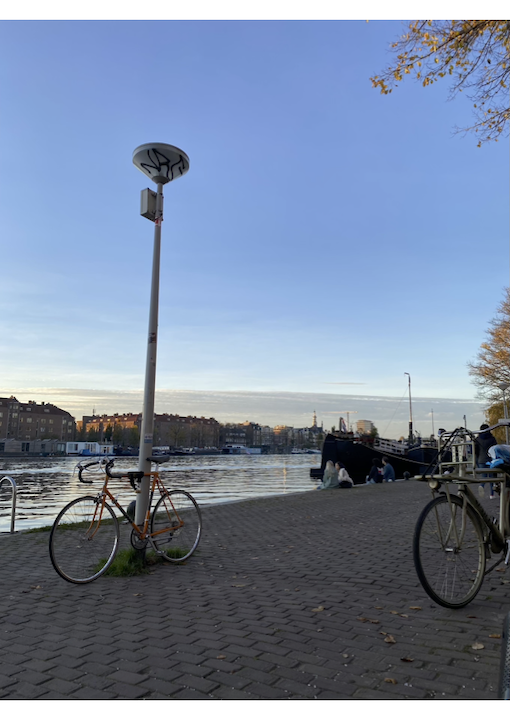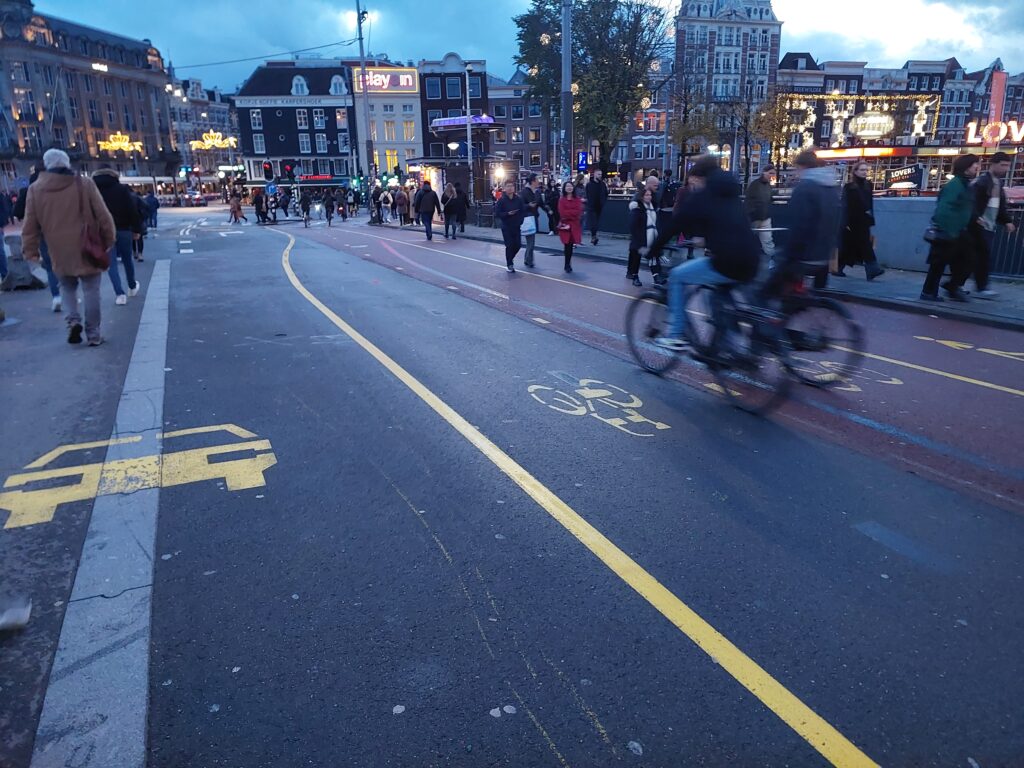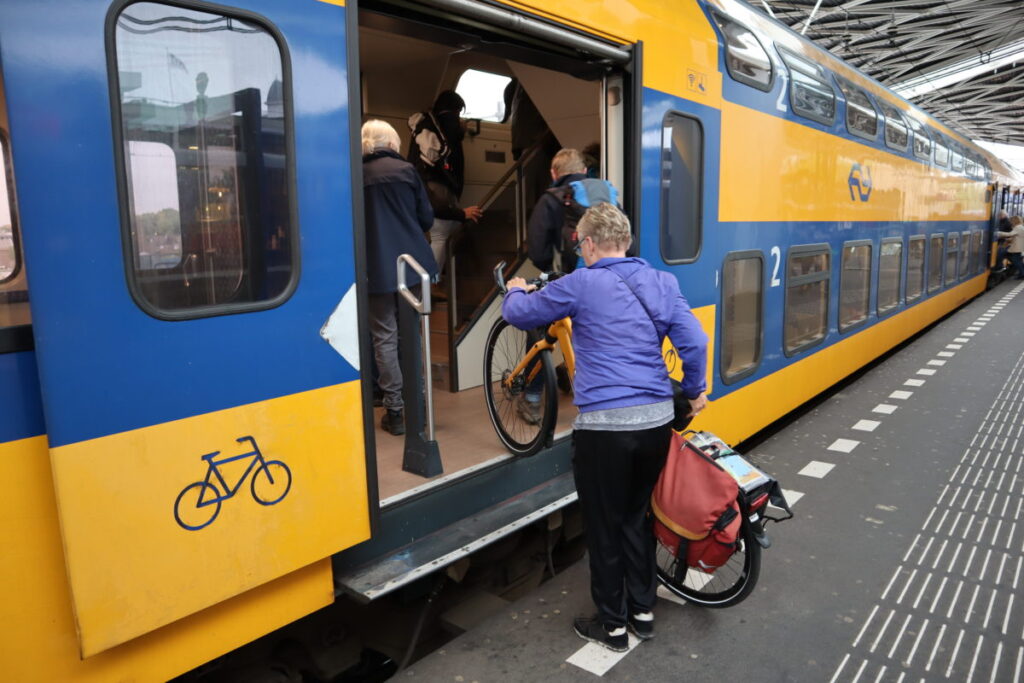Written by Jessica Rosenqvist
I have to say that the first time I thought about gender and its relation to mobility, I did not reflect on it so much. Is there disparity between men and women? If so, is it significant enough to affect women’s lives? I then began to look around me and notice how people travel. When it comes to cycling, I have simply taken it for granted that I can take my bike whenever I like, wherever I like. I even take my dog on the back of my bike too. If biking is not an option, then I will take public transportation.
I then began to observe the people. How and who travels with me on the bike or on public transport and how? Turns out that most people I see who cycle are men and when I’m on public transport, women are usually the ones with the children and the prams. And that is in Sweden, where gender equality is high. I then began to reflect on my own family structure growing up and realised that my mother’s travel radius was much smaller than my father’s. With these reflections in mind, I have ended up asking myself, how does gender affect women’s movement?

In this post I have picked out two academic articles that have been highly cited (over 100 times), that cover the topic on gender and mobility: Gender and mobility: new approaches for informing sustainability by Susan Hanson (2010) and Gender gaps in urban mobility by Laetitia Gauvin et. al. (2020). The paper by Hanson is a qualitative paper, whereas the paper by Gauvin et. al. is quantitative.
Hanson’s essay focuses on gender and mobility to ultimately find the knowledge gaps that must be bridged if these two topics are to take part in paths to sustainable mobility. My focus on her essay has been specifically on the gender and mobility aspect and less on sustainability. In her essay, through her review of the literature in the subject on gender and mobility, Hanson has found two strands of thinking with the question for each being: How does mobility shape gender and how does gender shape mobility?
The first question describes how processes of mobility/immobility shed light on the shifting power relations embedded in gender. The second question explains how gendered processes create and reinforce and change patterns of daily mobility. She explains how gender and mobility are inseparable and are constantly influencing one another and therefore, when thinking about mobility and gender, it should automatically come with thinking about social, cultural and geographical context. She identifies two views on looking at gender: 1) Post-structural view: Gender is a socially constructed system of dynamic differences. 2) Structural view: Gender is an innate source of fixed and universal male and female differences.
How does mobility shape gender? A lot of the thinking surrounding gender and mobility has the starting point that mobility/immobility are at the core of gender ideologies. Women are associated with the home, and private spaces, that is to say, their movement is restricted. Conversely, men are associated with public spaces and therefore their movement is less restricted. As Frances Willard, a suffragette in the late 1800s and author of the book A Wheel within a Wheel, noted with the freedom that comes with biking, mobility is empowering. And quoting Hanson: ‘Mobility is empowering, and because it is empowering, more mobility, especially for women, is a good thing.’ She then goes on to highlight examples of mobility empowering women, listing studies such as women traders in Benin who could travel and had higher incomes.
Another study was from women in Northern India, where for them, simply being able to move from the home to public spaces was an act of empowerment. Increasing the mobility for women also increased their self-confidence and challenged gender power structures. However, assumptions can be made that mobility is always good. Hanson writes how both mobility and immobility can be empowering for people in different circumstances just as each can be oppressive in other scenarios. By that she means that immobility can be oppressive when women are kept in their place and denied access to various locations, but that it can be empowering in some situations if the immobility helps create a well-developed social and support network that can include childcare and housing.
Mobility, as has been mentioned above, can be empowering, however, if women with low-income need to shuttle their children long distances or spend an unreasonable amount of time commuting to get to work, then mobility becomes oppressive. So in answering the initial question, it is important to assess mobility/immobility in different social and geographical contexts.
How does gender shape mobility? When looking at studies that focus on how gender shapes mobility, the general findings from these texts are that a woman’s travel radius is smaller than men’s on a daily basis. Women are also more likely to work from home, less likely to have a mobile workspace and the spatial range of girls is smaller than that of boys. Women are also more likely to use public transportation, go on non-work travel, make more stops and run household errands.
There are no specific variables for the concept of how gender shapes mobility and most studies focusing on personal mobility have not captured key aspects of household decision-making. Quoting from Hanson: ‘The body of work has also failed to consider what certain gendered mobility patterns mean to people in terms of how people view themselves or how they might be seen by others.’ Therefore, the work on how gender shapes mobility has neglected gender and only paid attention to mobility.
Laetitia Gauvin et. al. ‘s paper conducts a study on gender gaps in urban mobility by using mobile phone data of users in Santiago. The paper starts off by saying how cities are not designed gender neutral. Simple things such as the location of bus stops, the lighting in streets can affect how safe women feel in public spaces from physical or sexual violence. Women also do more multi-purpose, multi-stop trips and women-headed households are more often in locations with limited access to public transportation as they tend to work in low-paid jobs.
Urbanisation provides chances to reduce gender gaps through opportunities. However, urbanisation also increases inequalities by reinforcing geographical segregation. Mobility therefore, is a critical factor in reducing geographical segregation. The study has two main objectives: 1) To assess and quantify gender disparities in the mobility patterns of people in Santiago. 2) To identify socio-demographic factors and the availability of transport options that are associated with mobility inequalities.
To conduct this study, mobility patterns of over 400,000 individuals were collected. Two main assumptions were made for the study: 1) The gender of the subscriber profile = gender of caller. 2) Mobility inferred from Call Detail Records (CDRs) was representative of a user’s mobility behaviour. Four mobility metrics were used to assess gender differences: 1) The number of distinct locations visited by a user during the study period. 2) The number of distinct locations that accounted for at least 80% of a user caller activity. 3) The Shannon mobility entropy, S (quantified the diversity of individual mobility). 4) The radius of gyration (quantified the characteristic distance travelled by an individual).
The following were the findings from the study:
- Women travelled to fewer locations than men.
- The movement of women tended to be more spatially localised than men.
- Women’s movement had a lower S value, meaning that they have a smaller set of regularly visited locations.
- The various mobility variables widened as the socioeconomic status of the users decreased.
- Poorer women were more localised than men.
- The gender gap in mobility was significantly correlated with the gender gap in employment and fertility rate.
- There was a greater gender gap in mobility with larger households.
- The mobility patterns were similar for both genders in comunas with a single person.
- People with access to public transport visited more locations than those that didn’t. However, the average value of the number of distinct locations that account for at least 80% of a user caller activity was still higher for men than for women.
- Access to public transport was shown to be less equalising across socioeconomic segments for women than it was for men.
The authors write that further research needs to be done to be able to be generalised outside of Santiago but that the results are expected to hold for different countries, based on research by other researchers that have undertaken comparative studies on travel behaviour by gender and found similar results. They are also aware of the limitations of using mobile phone data to conduct such a study. One of them is that the population under study might not be representative based on the users’ sample. The second limitation is that the mobility patterns in the study are based on the user’s calling activity, which is affected by among others, age and gender (age data was unavailable in the study).
There were two things that struck me most from the two papers. The first one was how mobility is empowering and how it also helps reduce geographical segregation. The second was how context is important to understanding whether mobility/immobility is empowering or constraining. I would say that together, the two papers cover the topic of mobility very thoroughly. There is the qualitative analysis by Hanson and the quantitative from Gauvin et. al. I think that having read both papers, it emphasises the importance when talking about gender and mobility to include both types of analysis to get a more complete picture. As Hanson said, mobility is empowering and as Gauvin et. al. wrote, mobility helps reduce geographical segregation. Although Hanson does provide examples to demonstrate how mobility is empowering, it would be good to be able to see a few more detailed quantitative studies.
Conversely with Gauvin et. al., their paper would benefit from deep-diving into a more qualitative analysis of their findings. That is to say, although geographical segregation is negative, with that current situation being present, is immobility somehow empowering for the women in low-income neighbourhoods? Does it create a tightly knit community and support network? Looking back now on what I experienced with my family growing up, I can see that for my mother, immobility was restricting her from opportunities and that when she was travelling, it was to similar destinations every time. She didn’t go exploring new places like my father did, who travelled a lot more due to mostly work related reasons, in other words, their gender was shaped by mobility.
When I see all the men cycling here in the inner part of Stockholm, and not that many women, I can see the reason for that being the cycling infrastructure not being able to accommodate other types of bikes that can carry children. I would say that in this instance, mobility is shaping gender as the infrastructure is biased towards allowing some types of bikes to ride on the road more comfortably than others. You see cargo bikes with children driven by women from time to time, but I would guess that those are the braver cyclists, and that if the cycling infrastructure was better, more women would be able to run their multiple errands on bicycles in addition to using the car and public transport and be less restricted by the mode they choose for travel.
References
- Susan Hanson (2010) Gender and mobility: new approaches for informing sustainability, Gender, Place & Culture, 17:1, 5-23, DOI: 10.1080/09663690903498225
- Gauvin, L., Tizzoni, M., Piaggesi, S. et al. Gender gaps in urban mobility. Humanit Soc Sci Commun 7, 11 (2020). https://doi.org/10.1057/s41599-020-0500-x



